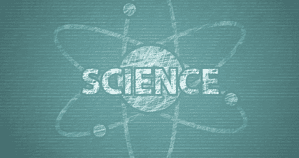
As a fitness enthusiast, I have always been fascinated by the science of muscle building. Over the years, I have read countless studies and experimented with different techniques to unlock the secret to building muscle. In this article, I will share with you science-backed tips and techniques for building muscle.
Introduction to the Science of building muscle

Before we dive into the tips and techniques for building muscle, it’s important to have a basic understanding of the science behind muscle growth. Our muscles grow through a process called hypertrophy, which is the enlargement of muscle fibers in response to stress.
When we lift weights or perform any form of resistance training, we cause microscopic tears in our muscle fibers. This triggers a repair process, and our body responds by building new muscle fibers and making existing ones bigger and stronger.
Understanding muscle growth and hypertrophy
To maximize muscle growth, it’s important to understand the two types of hypertrophy: myofibrillar hypertrophy and sarcoplasmic hypertrophy. Myofibrillar hypertrophy refers to the growth of the contractile proteins within muscle fibers, which leads to an increase in strength. Sarcoplasmic hypertrophy, on the other hand, refers to an increase in the fluid and energy stored within muscle fibers, which leads to an increase in muscle size.
Both types of hypertrophy are important for muscle growth, and the best way to achieve both is through a combination of heavy lifting and high-volume training.
The Role of Nutrition in muscle building

Nutrition plays a crucial role in muscle building. To build muscle, you need to consume more calories than you burn, which is known as a caloric surplus. This provides your body with the energy and nutrients it needs to repair and build new muscle tissue.
In addition to consuming enough calories, you also need to make sure you\’re getting enough protein. Protein is the building block of muscle tissue, and consuming enough of it is essential for muscle growth. Aim for at least 1 gram of protein per pound of body weight per day.
The importance of progressive overload
Progressive overload is the key to building muscle. This means gradually increasing the weight, reps, or sets of your exercises over time to continue challenging your muscles and forcing them to adapt and grow.
It’s important to track your progress and continually push yourself to lift heavier weights or perform more reps. This can be done through a structured training program or by using tools like a training log or fitness app.
The most effective exercises for building muscle

Not all exercises are created equal when it comes to building muscle. Compound exercises, which involve multiple muscle groups and joints, are the most effective for building overall muscle mass.
Some of the best compound exercises include squats, deadlifts, bench presses, pull-ups, and rows. These exercises target multiple muscle groups and allow you to lift heavier weights, which leads to greater muscle growth.
The benefits of compound exercises
In addition to building muscle mass, compound exercises offer several other benefits. They improve overall strength and athleticism, increase bone density, and burn more calories than isolation exercises.
Incorporating compound exercises into your training program can help you build muscle while also improving your overall fitness and health.
The Role of Rest and Recovery in muscle building

Rest and recovery are just as important as training when it comes to building muscle. When you lift weights, you cause damage to your muscle fibers, and it’s during the recovery process that they grow and get stronger.
Make sure you’re getting enough sleep, eating enough nutrients, and taking rest days to allow your muscles to recover. Overtraining can lead to injury and hinder muscle growth.
Common mistakes to avoid in muscle building
There are several common mistakes that people make when trying to build muscle. One is not eating enough calories or protein, which can hinder muscle growth. Another is relying too much on isolation exercises or not incorporating enough compound movements.
Overtraining is another common mistake, as it can lead to injury and hinder muscle growth. Make sure you\’re giving your muscles enough time to recover between workouts, and don’t be afraid to take rest days when needed.
Science-backed tips for maximizing muscle growth

To maximize muscle growth, there are several science-backed tips you can follow. One is to vary your rep ranges, which can stimulate different types of muscle growth. Another is to use drop sets, which involve progressively reducing the weight as you fatigue to increase muscle fatigue and stimulate growth.
Incorporating supersets, which involve performing two exercises back-to-back without rest, and focusing on the eccentric (lowering) portion of exercises can also help maximize muscle growth.
Techniques for breaking through muscle-building plateaus
Plateaus are a common challenge when it comes to building muscle. To break through a plateau, you can try changing up your exercises, increasing your training volume, or implementing new training techniques like supersets or drop sets.
It’s also important to make sure you’re getting enough rest and recovery, as overtraining can lead to plateaus.
Conclusion
Building muscle is a complex process that requires a combination of science-backed techniques and consistent effort. By understanding the science of muscle growth, incorporating compound exercises, consuming enough calories and protein, and focusing on progressive overload and rest and recovery, you can unlock the secret to building muscle and achieving your fitness goals.


